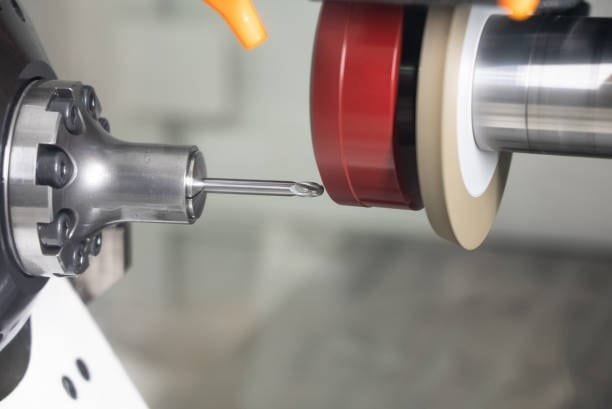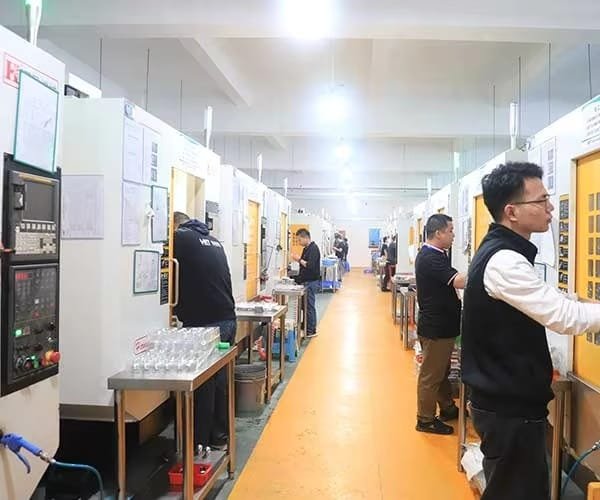Introduction
Modern dynamic milling techniques enable CNC machining to work with increased speed and longer tool life for faster material removal. Traditional milling methods that maintain unbroken tool paths in contact with workpiece materials lead to unfavorable cutting performance that generates both high temperatures and uneven tool damage despite reduced manufacturing speeds. Dynamic milling employs complex toolpath management systems to maintain stable cutting mechanics that produces exceptional results in different industrial processes. The aerospace manufacturing industry together with medical device production industry recognizes dynamic milling as an essential practice for achieving precision requirements and enhanced productivity.

A detailed blog delivers comprehensive explanations of dynamic milling basics along with advantages as well as practical applications and adoption methods for manufacturers and implementation challenges. The article explains in detail how dynamic milling affects modern manufacturing processes and its role in developing contemporary production methods.
What is Dynamic Milling?

Advanced CNC technology enables efficient tool engagement and chip load management through its intelligent toolpath strategies. Homogeneous tool-workpiece interface in dynamic milling operations eliminates volatile contact forces along with preventing early tool degradation that typically affect standard milling methods. Changes to the toolpath based on part shape create a stable condition during the cutting process.
Technical procedures based on high-speed machining principles enable increased feed rates and cutting speeds alongside sustained tool reliability. Dynamic milling outperforms traditional methods because it maintains steady chip thickness and constant engagement angle to achieve efficient performance and reduced heat accumulation. Crucially it operates at higher speeds yet delivers predictable results because of precise program execution.
Key Features of Dynamic Milling
- Tool engagement angle stability within the dynamic milling process delivers steady cutter stress reduction to stop tool deterioration and equipment breakdown.
- Advanced software algorithms use adaptive toolpaths that change the cutting directions to optimize performance through every process stage.
- Higher cutting speeds alongside increased feed rates become possible because of the controlled cutting conditions that protect product quality standards.
- The heat produced during operations remains reduced with dynamic milling which ensures extended tools serve a longer cycle and maintains piece integrity.
- Chips become easier to evacuate through proper removal techniques which prevents re-cutting processes and maintains low temperatures while maintaining a clean workspace during cutting operations.
- Dynamic milling produces high-grade components with precise dimensions because it eliminates force variations that maintain product specifications within tolerance limits.

Dynamic milling proves its superior status as an exceptional technique by combining these features which grant unmatched precision and efficient performance versus classical milling processes.
Benefits of Dynamic Milling

Dynamic milling delivers multiple advantages that draw manufacturers to select it for operational optimization goals. This article examines these advantages in detailed fashion.
Increased Tool Life
Dynamic milling produces extended tool durability because it uses a technique that reduces tool wear to extend tool life. The technique maintains static values of engagement angle and chip load throughout the production process in order to minimize mechanical wear together with thermal degradation. The reduction of generated heat proves essential since elevated temperatures damage tool materials through time. Tools undergo longer operational periods during dynamic milling thus manufacturers experience fewer replacement needs and savings in tooling costs.

Higher Material Removal Rates (MRR)
The fast and effective material removal occurs through using dynamic tool paths during milling operations. Enhanced toolpath optimization with higher cutting speeds provides manufacturers with performance beyond conventional material removal capabilities. This method decreases manufacturing runs while increasing the amount of finished items and suits well for large-scale manufacturing operations. Extending material exploitation rates at accelerated speeds throughout tool usage represents an essential factor for cutting manufacturing costs of individual components.
Reduced Tool Breakage
The increase of cutting forces routinely causes tools to break within conventional milling operations. The distribution of balanced forces during dynamic milling reduces tool breakage risks because it prevents force load transitions. Magnesium ammonium phosphate can prevent disastrous tool failures in dynamic milling operations which further minimizes operational downtime while decreasing tool replacement expenses. Manufacturers acquire operational assurance because their tools become more durable which minimizes unexpected tool damage.
Enhanced Surface Finish

Dynamic milling enables high precision stability to create smooth surfaces thus eliminating the need for supplementary polishing or grinding operations. The process delivers consistent and clean surface quality through controlled tool motion that fulfills the norms of aerospace and medical field requirements. Product appearance gets enhanced together with functional improvements through this process that reduces production timeframe more material used.
Lower Cutting Forces

The handling of cutting forces across adaptive toolpaths supports proper force distribution between tool and material thus minimizing both tool strain and machine load. This machining process has less stress and generates improved operational stability in addition to lowering CNC equipment wear. Machines handling light cutting forces demonstrate better accuracy measures as they age resulting in reliable machinery operation.
Improved Machining of Hard-to-Cut Materials
Materials including titanium and Inconel as well as hardened steels resist conventional machining because their heat-producing nature during processing operations. Dynamic milling excels at such tasks because its continuous work process and suppressed heat production enables superior processing of hard materials. Production companies acquire fresh processing solutions for their high-performance alloy materials through this capability.
Applications of Dynamic Milling

Dynamic milling demonstrates exceptional value to various industries because its adaptable properties allow it to function as an essential manufacturing method. The main industry sectors have shown significant results through implementation of this technology.
Aerospace Industry
The aerospace industry relies on precise measurements along with resilient materials because it works frequently with titanium and aluminum Inconel that are difficult to handle. The production of turbine blades and structural parts along with engine casings depends on dynamic milling because this process effectively mills alloys and simultaneously reduces heat production and tool wear.
Automotive Manufacturing
The automotive production industry uses dynamic milling to efficiently manufacture engine blocks along with transmission components and various precision parts at shortening production cycle times. High production speed can be achieved using this technique as it maintains quality standards which allows manufacturers to synchronize their output levels with market requirements.

Medical Device Manufacturing
Medical device manufacturing requires exact production methods since it utilizes biocompatible stainless steel and titanium materials for creating implants alongside surgical tools. Dynamic milling manages to produce accurate dimensions while delivering enhanced surface quality which medical applications require at their most critical level.
Mold and Die Industry
Manufacturing molds and dies needs exact dimensional machining of complex parts from rugged tool steels. The production technology leads to quick manufacturing coupled with superior surface quality necessary for die-casting and injection molding applications.

Energy Sector
Newtonian milling techniques play a vital role in producing extended-lasting engine components made from hard materials that power turbines within power plants and oil and gas wells. Engineers choose this method particularly due to its high efficiency and precision which creates dependable solutions for difficult applications.
Key Considerations for Implementing Dynamic Milling

Strategic implementation of the dynamic milling strategy depends on precise planning which involves extensive evaluation of key factors.
Tool Selection
Engineers need to select end mills featuring TiAlN or AlTiN coatings because these tools demonstrate superior durability and resistance to high temperatures. Improved cutting performance can be achieved through helix angle variable tools made robust by optimized tool geometries.
CAM Software Optimization
The new generation line of CAM software systems running Mastercam, Fusion 360 and NX provides dynamic milling paths through trochoidal milling and adaptive roughing technology. Strategic programming stands as the fundamental factor to maximize technique efficiency by achieving safe cutting operations.

Machine Rigidity and Stability
Successful execution of dynamic milling requires a CNC machine that remains stable and rigid. The combination of high-speed spindles and sturdy construction helps control vibrations while maintaining accuracy which leads to superior performance.
Coolant and Lubrication
High-pressure coolant systems along with other effective solutions facilitate heat removal and chip evacuation which improves both tool longevity and machining efficiency flute length.

Operator Training
Operators must master new optimization techniques for feeds and speeds since dynamic milling differs substantially from traditional machining methods axial engagement. Comprehensive training ensures successful implementation.
Challenges of Dynamic Milling

Dynamic milling provides many benefits but operators face several challenges with its implementation.
- Initial Learning Curve: Operators who are familiar with traditional milling methods may find the move to dynamic milling difficult because of its unfamiliarity.
- CAM Software Costs: The implementation of dynamic milling requires specialized software that can result in considerable initial spending.
- Machine Capability: Machines that are outdated or unstable might struggle to meet the requirements established by this technique.
- Material-Specific Adjustments: The need for customized parameters for each material creates added complexity in the process constant load.
Conclusion
Dynamic milling represents the next generation in CNC machining because it achieves unmatched efficiency together with extended tool life and superior surface finishes. Manufacturers achieve higher productivity levels and lower expenses through dynamic milling’s adaptive toolpaths combined with its consistent engagement angle. Businesses need to invest in tools, software and personnel training to achieve excellent performance and profitability results. Dynamic milling stands as a transformative technology across industries from aerospace to medical manufacturing which is set to shape the future of precision machining.

